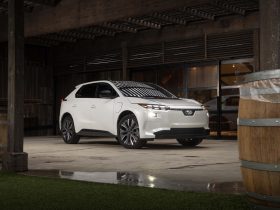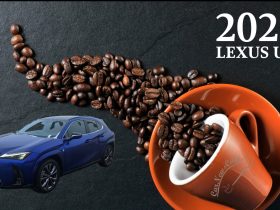
While the news loves to rave somber headlines about the so-called weak state of the plug-in car market, a quick look at the introduction of hybrids over a decade ago paints a very different story.
It’s hard to image that 13 years ago, hybrids were starting to roll out, making for flashy fashionista Hollywood statements. A close look at the numbers of hybrids sold back then when pitted against the introduction of electric cars (EV) and plug-in hybrids (PHEV) now, and the story looks different from what the news continually bombards us with. Despite introducing EVs and PHEVs in the midst of a recession, their sales have done well, compared to hybrids a decade earlier without a recession. So why is the news so gloomy?
Sensationalism Sells.
Of course, the answer to that question lies squarely on the fact that the news is more preoccupied with viewership market shares, than reporting the news as is. This death spiral has sent many news outlets locked in a frenetic race to see who would have the most viewers in order to attract the highest amount of advertisers. This is the best recipe for failure in the long run and explains why so many distrust news outlets.
Hybrids by the Numbers.
According to a Navigant Research report, global sales of light duty hybrid and plug-in electric vehicles will reach 6.6 million units annually in 2020. That’s almost 7% of the total light duty vehicle market. According to another new tracker report from the same company, there are now almost 64,000 public charging stations installed globally.
Since 1999, a total of 2,982,186 hybrid electric automobiles and SUVs have been sold in the USA, according to Wikipedia but what is even more striking is that the beginnings were very timid. Honda introduced the first real hybrid in the US market, the Insight, with little to no fanfare. It sold only 17 units in 1999. Toyota did better the following year with its Prius, which it also introduced with as little fanfare as possible, by selling 5,562 units.
All hybrids sold:
- 1999; 17
- 2000; 9,350
- 2001; 20,282
- 2002; 36,035
- 2003; 47,600
- 2004; 84,199
- 2005; 209,711
- 2006; 252,636
- 2007; 352,274
- 2008; 312,386
- 2009; 290,271
- 2010; 274,210
- 2011; 268,752
Plug-Ins by the Number.
Plug in vehicles, those which include a plug to recharge their batteries, whether pure electric or plug-in hybrids, show a different market penetration curb, one that doesn’t seem to slow down. Considering these vehicles came in the middle of a global economic crisis, in an article I wrote for the Examiner a year ago, PHEV sales numbers were 603 in January 2012, then jumped to 1,023 February, 3,200 in March, 3,116 April, 2,766 May, 2,455, July 2,537, August 3,878, September 4,503, October 4,994. For electric cars, January 824, February 639, March 961, April 775, May 612, June 863, July 479, August 837, September 1,306, October 2,040. The monthly performance bests the yearly performance of the introduction of hybrids.
2007 to 2011 Plug-In Numbers.
The full sales numbers for 2011 was 284,064, which was up 2.23% from the previous year. In 2010, 274,555 EVs were sold, a 2.37% jump from the previous year. In essence, plug-in vehicles outperformed early sales of hybrids.
John Gartner Pike Research feels the global market will reach 1.64 million hybrids annual sales in 2017. He also feels we will see 486,000 plug-in hybrids and 616,000 battery cars by then.
We can see the bottle as half empty or half full, it depends on how optimistic or pessimistic you are. One thing is certain, plug-in vehicles were introduced in an era of pessimism and a downturn economy. It took much less time for buyers to understand these cars were a sort of insurance against ever increasing gasoline prices. Strangely enough, as soon as hybrids and plug-ins had a firm take in the market, magically petroleum numbers stabilized.
No matter how you look at it, people are ready for plug-in hybrids and thus far, electric cars are seen more and more as feasible solutions for city commuting. Pure electric cars and their plug-in hybrid counterparts are still showing better growth than hybrids did over a decade. So why is mainstream news bent on painting a false picture?






